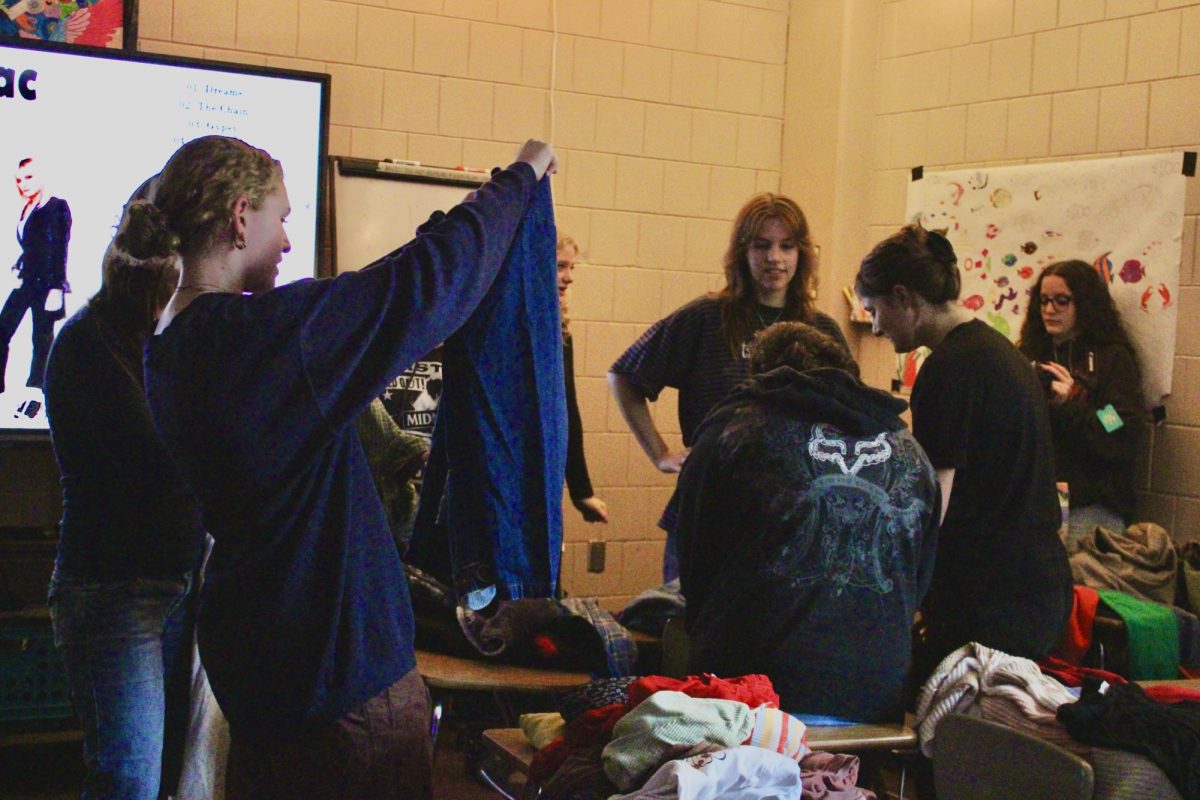Fashion brands are quick at keeping up to date with new trends, and teens are the main consumers. But most teens buying these clothes probably do not know the effects their closet has on the planet.
Fast fashion is extremely low-priced clothing that is mass produced to keep brands on top of recent trends. Though fast fashion is cheap and trendy, it has an enormous environmental footprint in production and disposal.
Stephanie Feldstein from the Center of Biological Diversity states that the fast fashion industry is a significant contributor to the climate crisis, responsible for as much as 10% of global carbon dioxide emissions. Reducing fast fashion could lift an environmental burden off the planet.
Many brands people wear everyday are fast fashion and might not even know it, the biggest fast fashion brands as of today include H&M, Zara, Urban Outfitters and even Nike.
Most consumers of fast fashion might not even know it, large fashion brands will use a technique called “Greenwashing” to make consumers think they are more sustainable, without actually making a change. This could be making ad campaigns look green, making a sustainable line of clothing, even just making green colored clothing can persuade consumers their brand is environmentally friendly.
Another flaw to the fast fashion industry is employee working conditions. Employees of major brands work extremely long hours with little to no wage, children as young as six years old have been seen working in sweatshops. These workers spend their whole day making cheap clothing for companies, employees will work in buildings with no air ventilation, spending their day inhaling toxic chemicals that will later kill them.
Sweatshops are a dangerous place to work in, working with toxic chemicals for up to 20 hours a day has major risks to it. Workers are forced to spend as much as 72 hours in these sweatshops, they receive no overtime and their hourly wage can be as low as 3 cents USD.
Employees have come out about conditions of a sweatshop, adults and children stating they received Physical, sexual and verbal abuse during their shifts. While this way of work is cruel, abuse of all kinds is very common in sweatshops.
As a community, we need to be more aware of our impact on this world, the pollution is only going to increase, but we can help bring change slowly and turn our planet around.
There are many alternatives to fast fashion and ways to help bring recognition to the crisis.
The High School now offers a sustainable fashion club, which focuses on bringing awareness to the fashion industry and helping young students become more sustainable in their everyday life. Junior Jessie Dean founded the club and holds meetings once a month.
“Donate your clothes that you don’t use anymore instead of throwing them away,” Dean said, “Also focus on lesser footprint clothing.”
Shopping secondhand can be a step in the door to a more sustainable life, by not supporting large fashion companies people can actively stop the rapid growing fast fashion industry.
Another large problem with fast fashion is waste, most clothes purchased from fast fashion brands are not made with quality. They are low- priced clothing that is made with little to no care, fast fashion items are made quick and cheap to stay on top of trends.
There are alternatives to wasting clothing, donating used clothing to thrift stores or non profit organizations can not only better the planet, but also help someone who may be in need. Just because someone may not like a piece of clothing does not mean it is trash.
“Trying to upcycle clothing pieces that you might not wear,” junior Sustainable Fashion Club Vice President Ainsley Smith explained is an effective way to reuse old clothing and a great first step to becoming more sustainable in everyday life.
As the population continues to increase, the shift towards sustainable living needs to be prioritized. Every choice we make can have an impact on the environment, it is possible to look good while also helping create a healthier planet. This will not happen overnight, but staying aware of what you purchase can be a first step of an eco-friendly lifestyle. By contributing to a more sustainable earth, you are joining the movement to help our planet become the best it can be. Do not just watch the change, be a part of it.









